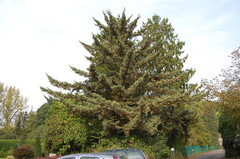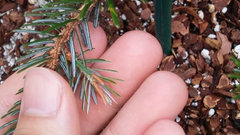What jezoensis variety is the Howell's dwarf Tiger tail spruce?
Heruga (7a Northern NJ)
6 years ago
Featured Answer
Sort by:Oldest
Comments (22)
clement_2006
6 years agolast modified: 6 years agoHeruga (7a Northern NJ)
6 years agoRelated Professionals
Cary Landscape Architects & Landscape Designers · Eden Prairie Landscape Architects & Landscape Designers · Fitchburg Landscape Architects & Landscape Designers · Foothill Ranch Landscape Architects & Landscape Designers · Forest Park Landscape Architects & Landscape Designers · Concord Landscape Contractors · Amesbury Landscape Contractors · Bethel Park Landscape Contractors · Choctaw Landscape Contractors · Conroe Landscape Contractors · Fair Lawn Landscape Contractors · Hawaii Landscape Contractors · Rosemount Landscape Contractors · Washington Landscape Contractors · Wilton Landscape ContractorsHeruga (7a Northern NJ)
6 years agolast modified: 6 years agoHeruga (7a Northern NJ)
6 years agoclement_2006
6 years agoHeruga (7a Northern NJ)
6 years agoclement_2006
6 years agolast modified: 6 years agoclement_2006
6 years agoHeruga (7a Northern NJ)
6 years agoclement_2006
6 years agoHeruga (7a Northern NJ)
6 years agoclement_2006
6 years agoHeruga (7a Northern NJ)
6 years agoclement_2006
6 years agoHeruga (7a Northern NJ)
6 years agoclement_2006
6 years agoHeruga (7a Northern NJ)
6 years agolast modified: 6 years agoDavid Olszyk, President, American Conifer Society
6 years agolast modified: 6 years agoHeruga (7a Northern NJ)
6 years agoHeruga (7a Northern NJ)
5 years ago
Related Stories

GARDENING GUIDESGreat Garden Combo: 3 Wonderful Plants for a Deer-Resistant Screen
Protect your privacy and keep deer at bay with a planting trio that turns a problem garden area into a highlight
Full Story

















David Olszyk, President, American Conifer Society